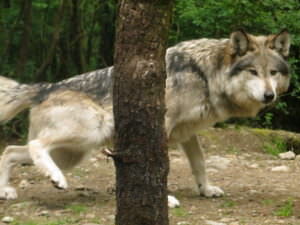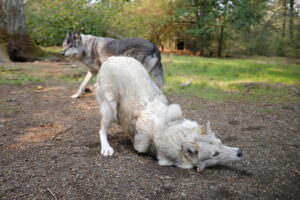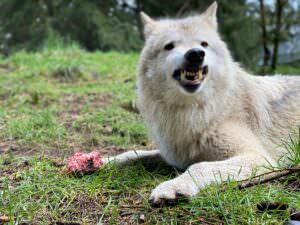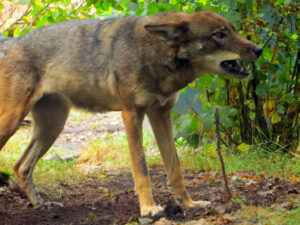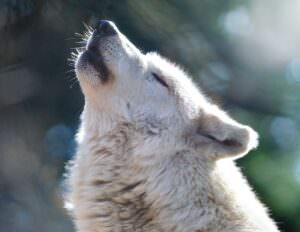Communication & Behavior
Wolves use three main avenues of communication: olfactory (scent), postural (body language), and vocal.
Scent
Olfactory communication among wolves consists primarily of scent marking. Scent marking is used to clearly mark the boundaries of territories, to claim and defend that territory from other packs, to mark food ownership and to act as a sort of road map for the pack itself. Because wolves have scent glands between their toes, they leave their personal signature wherever they walk. Urination is the most common form of scent marking for wolves.
Body Language
A great deal of the communication among wolf pack members involves body language. Within a pack of wolves, specialized behaviors and postures have evolved that help to reduce the aggression between individual animals. This body language helps the pack live together and function as a harmonious unit. Facial expressions are among the most obvious visual ways in which wolves express emotions.
Generally, bared teeth with ears erect and pointed forward indicate a threat by dominant wolves. Conversely, closed mouths, slit-like eyes and ears pulled back and held close to the head indicate subordinate behavior. Wolves also use tail positions to communicate emotion. Threatening wolves hold their tails high, almost perpendicular, while submissive wolves lower themselves before dominant pack members, tails tucked between their legs.
Vocal
Vocal communication among wolves consists of howls, whines, growls and barks. Although all the functions of howling are not known, the howl is meant to carry a great distance. Scientists think that one of the main reasons wolves howl is to assemble the pack. Another possible function of howling is to claim territory. Some experts think that wolves can identify other wolves through their howls. Whines are used often at the den site and are used primarily by the adult female. They are thought to be sounds of affection. Growling conveys aggressiveness and usually comes from dominant wolves posing a threat. Some experts think barking signifies alarm, while others think it is the call of the chase. It could also indicate any kind of excitement.

